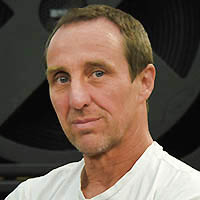Mixing front of house sound for festivals is both one of the easiest and most challenging situations we face as live sound engineers.
They present a perfect storm of all factors working against us: minimal setup and sound check time, huge audiences, pressures from band management, outdoor environmental factors, plus show reviewers can make direct comparisons between the quality of our mix and a multitude of others.
To make things worse, unless we work for a top-billed artist on the event, we often have little or no control over the gear we use or the configuration of the sound system.
How can we hope to present quality audio to the audience, let alone dial the show up with an impressive and memorable mix?
Carpe diem! This Latin phrase meaning “seize the day” captures my thoughts on the matter.
Developing the ability to walk into festivals with no sound check and consistently offer a solid, well-balanced mix, dialed in at the right volume from the very first note, is a skill that can define one as a world-class sound engineer.
Beyond Our Control
It’s all about preparation, establishing reference points and then having multiple methods of achieving the well thought-out goals.
Typically the plan starts with advancing the show and mining as much useful information as possible.
What type of sound system? What type of console? Are the subs on an aux? Can digital files be uploaded to the console? How much time will there be to set up the console?
Can music be played over the system? Will setup occur while another band is playing or during a slotted set change time? Will there be a line check through the system, through headphones, or even at all?
The answers to these questions are extremely useful, but I’m going to share some tricks that will help lead to a stellar mix regardless of the answers.
Let’s preface with a few assumptions: a) you’ve worked with the artist before and will continue to do so; b) the artist is carrying backline instruments; and c) you’re a reasonably skilled engineer capable of achieving a desirable mix under normal conditions.
The Strategy
The first key to getting a solid sound at festivals is to establish predictable levels and tones from the stage inputs.
The first step of the process is to lock in your microphone types and placements – one of the few things that we as engineers actually have control over on a regular basis.
If you don’t carry a mic package, then standardize on mics that are readily available. Even if you just carry Z-Bars, Atlas MAC-1s, Audix CabGrabbers or any of a multitude of small and portable mic mounting devices, establishing consistency is very important.
A festival is not the time to experiment with mic types and placements, so settle it beforehand.
Mark and label all placements. Take pictures of each mic location and print them out so the task of setting the mics can be delegated if need be. Small strips of gaff tape forming squares on the front of guitar cabinets can be helpful.
Label the backs of the instrument amps with the same names they’re referred to on the mic chart and stage plot so the crew knows where the mics and DIs are to be placed and connected.
Keep in mind that the closer you mic the instruments, the less “room sound” will affect the sound you’re getting. Since the goal is to achieve a high level of sonic consistency from the stage, mic’ing closer is usually better.
You can always use the console’s high-pass filters to compensate for added low-end from proximity effect. Getting rid of spurious venue and stage noise bleed due to distant mic’ing is very tough.














